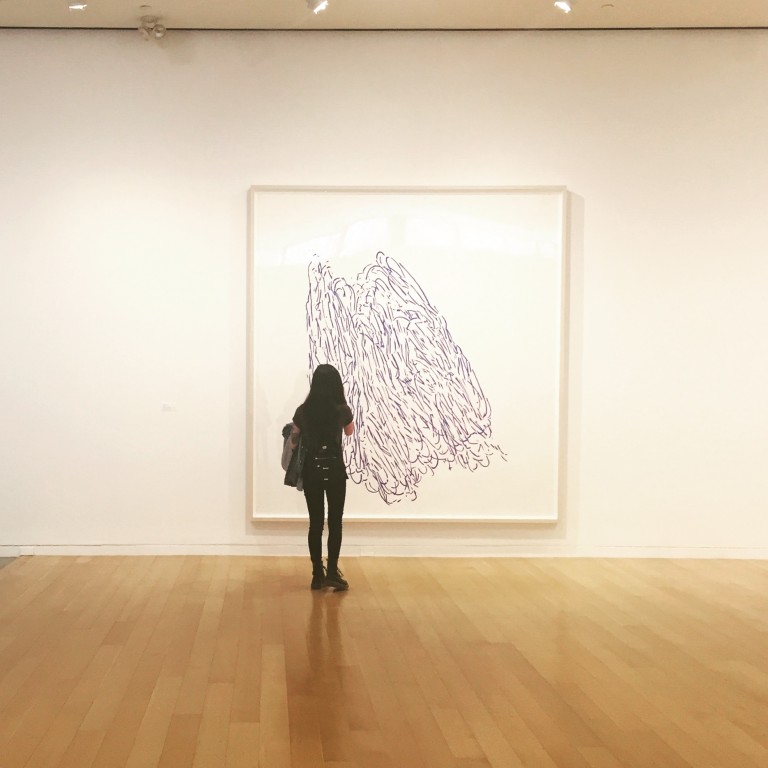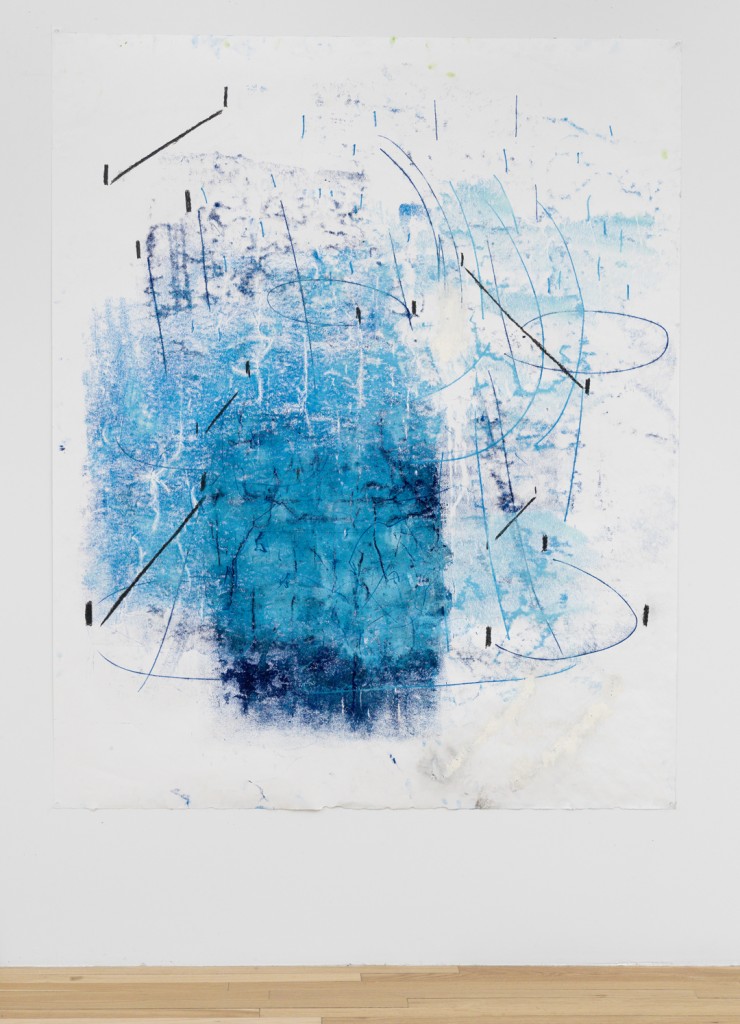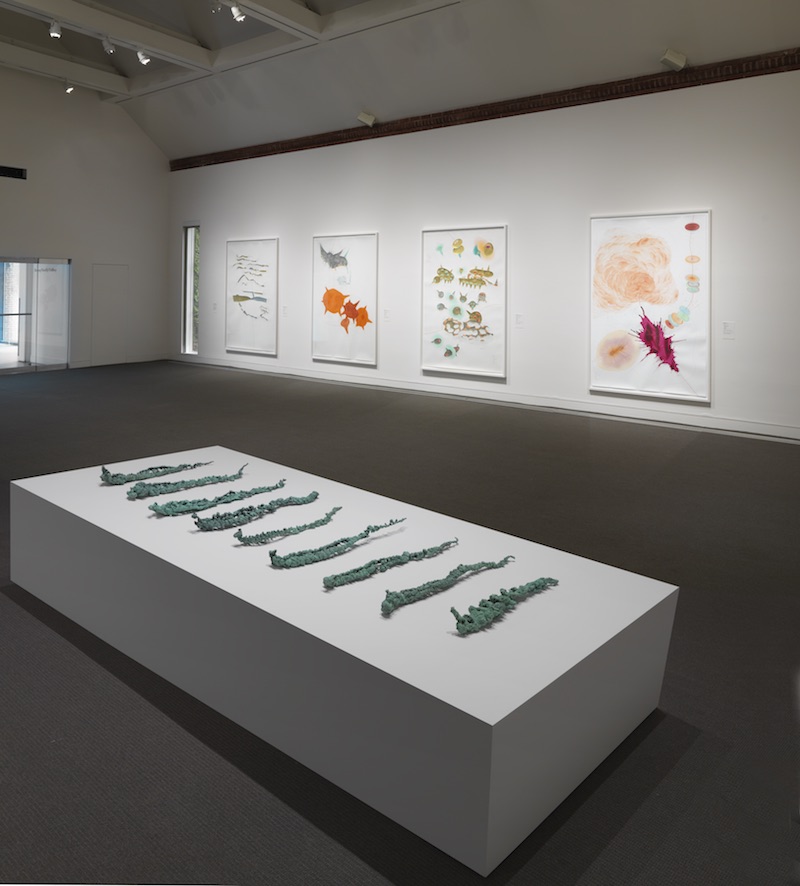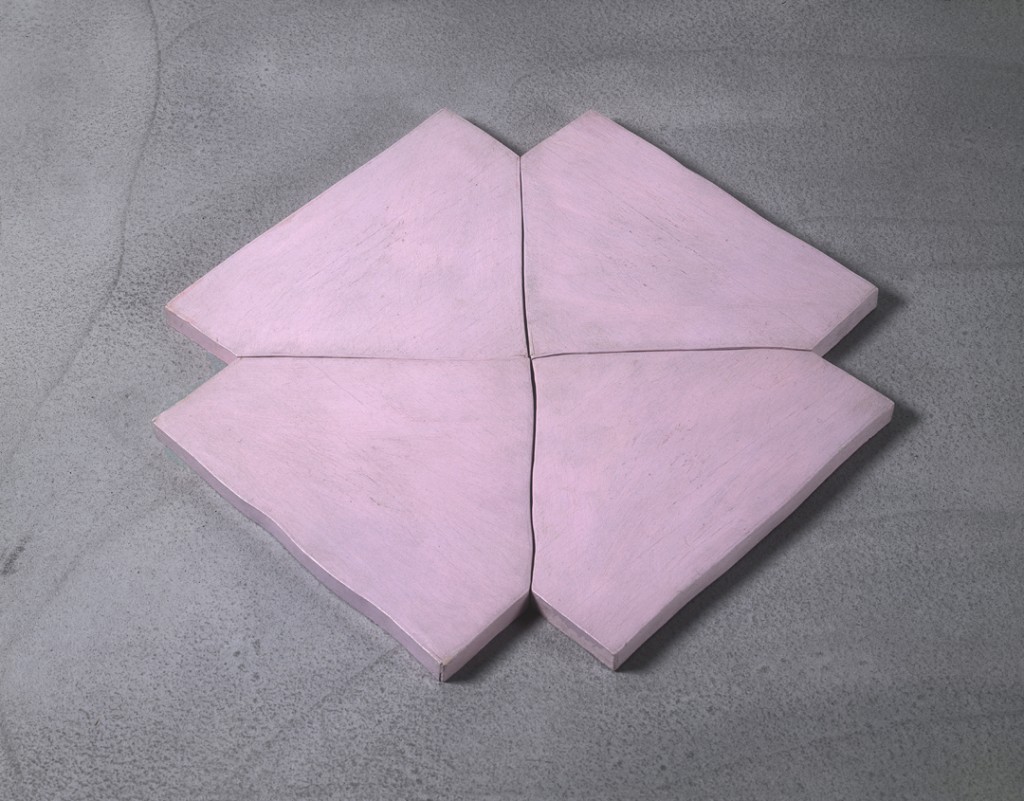by Jaime Gaiti
Drawing Redefined includes the drawings of Roni Horn, Esther Kläs, Joëlle Tuerlinckx, Richard Tuttle, and Jorinde Voigt. These artists are primarily considered sculptors, however the exhibition includes mostly two-dimensional work and explorations in drawing. It focuses on the intimate process the artists each engage in when making work and how they navigate between working with two-dimensional space versus three-dimensional space. The connection among the artists lies in their definitions of drawing as a process related to mark-making and gesture that is not limited to a specific medium or form.

Evident in all of the work is the intimate connection between the artist and the pieces: the work has been carefully considered by the artist in every aspect from color, form, line, and use of space. Much of the work included in the exhibition are not pieces the artist’s would typically show, such as Roni Horn’s more recent large scale works on paper. For Horn, these works are created in private moments of exploration in her studio when she is working out ideas and not thinking about sharing the work with others. Horn’s drawings are comprised of segments of line that are cut and pasted to create a precise collage effect. The build-up of these fragments create a structural shape that feels as though it should have mass and form. Like all the work in this exhibition, Horn’s drawings hint at an intimate process of exploring two-dimensional forms and line, and how to use them to engage a space.
Richard Tuttle’s more sculptural pieces exploring line, color, and form accompany Horn’s drawings in the space — while they are visually very different and exist on different planes, the use of drawing connects the work. In these pieces, Tuttle is drawing with objects: the spaces they occupy and the negative space they create act as lines and shapes. Tuttle’s drawings activate space and physically engage with the viewer, taking them out of the flat space of a picture plane. Joëlle Tuerlinckx’s work exists — visually and literally — in between that of Horn and Tuttle. Tuerlinckx combines two- and three-dimensional elements in her work to create line and connect the two planes. Particularly interesting is the Glass Scale Model, included in this exhibition, where glass walls reflect images of the stones placed near it creating two-dimensional renderings of them. Grouping the work of Tuttle, Tuerlinckx, and Horn together in this exhibition makes the gallery feel very cohesive. Viewers can easily move between each piece and the planes that they exist on and no single piece demands more attention than another.

The work of Kläs and Voigt, in an adjacent gallery, show more evidence of the body being present in the work. Kläs’ drawings are an exploration of mark-making and gesture to create lines and form. Smudge and erasure marks are evident and the work implies action and movement. Her work creates an interaction between the body and two-dimensional space which is interesting considering that her sculptures seem to do the opposite, by translating two-dimensional shapes and line into three-dimensional form. Kläs’ sculptures bring her drawings into the round, the shapes and textures she draws become abstract objects when she creates three dimensional forms with the same shape and texture. An example of this is her sculpture consisting of three brass tubes standing vertically that are reminiscent of the arcing lines in her drawings: the sculpture is essentially a drawing in space.

Voigt’s work is similar in the way it records gestures while the scale and lines of the drawings respond to the reach of her own body. She takes inspiration from sonatas and philosophical texts to create systematic worlds within the page. The shapes feel as though they have volume and smooth lines indicate directions of rotation, movement, and a horizon line. Voigt’s two-dimensional surfaces seem to have depth and open space for these forms to be moving within.
While the artists included in Drawing Redefined each have a unique way of working, they are connected by their interest in exploring space on all planes and translating forms from two dimensions to three and vice versa. The drawings on display are ways for the artists to work out their ideas and perceptions of space. Each piece is a look into the thought process of these artists who have unique ways of thinking about space and form. Although the work on view is all considered drawing it is also very structural, engaging and creating space. The works included are examples of artistic inquiry and an ongoing, intimate process that has developed alongside the bodies of work the artists are most known for.
Drawing Redefined was on view at the deCordova Sculpture Park and Museum from October 3, 2015 through March 20, 2016.
deCordova Sculpture Park and Museum
51 Sandy Pond Road, Lincoln, Massachusetts | 781.259.8355
Open everyday 10am–5pm. Adults: $14, Seniors (65+): $12, Students: $10, Children (10 and under): free. First Wednesdays are free.
Editor’s Note:
Jaime Gaiti and David Martinez are both seniors graduating from Maine College of Art this spring. As members of the Senior Curatorial Team, they have worked collaboratively this semester on developing their BFA Thesis Exhibition, In Sensorium. Their work in this issue of The Chart is part of a partnership with Christopher Patch’s curatorial class to investigate and respond to curatorial decisions in museums and institutions in an effort to inform the students’ own choices throughout In Sensorium and beyond.
In Sensorium is a four-part exhibition of thesis works from the 2016 graduating senior class at Maine College of Art. Each section examines the use of different materials, identities, processes and visual languages through four distinct themes: render, arrive, disturbance, and vivid. The exhibition showcases work from eleven disciplines across three floors of the Porteous building at 522 Congress Street and two adjacent galleries. This collection of exploratory concepts and innovative designs culminate in a full sensorium of experience.
In Sensorium is on view Friday, April 29 through Saturday, May 21, 2016. Opening Reception is Friday, May 6, 2016. Admission is free. For more information, visit meca.edu/index2016

Jaime Gaiti was born in 1993 on Long Island, New York, where she lived for 21 years. She attended Suffolk County Community College from 2011 to 2014 where she studied visual arts. During this time she also enrolled in numerous special effects makeup workshops in New York City where she expanded her knowledge of painting, sculpture and mold making. In 2014, Gaiti transferred to the Maine College of Art in Portland, Maine, where she majored in Sculpture and graduated with her Bachelor in Fine Art in 2016. Her work is inspired by the human body and its fragility and complexities. Gaiti has been involved in numerous student exhibitions, participating in her first group show in 2011 at the Sayville Art Gallery in New York. Since then she has participated in exhibitions in the Maurice N. Flecker Gallery in Selden, New York, and in the Porteous Building of the Maine College of Art in Portland. Her work is inspired by the vulnerability of the body and ideas of mortality as well the beautiful and grotesque.

